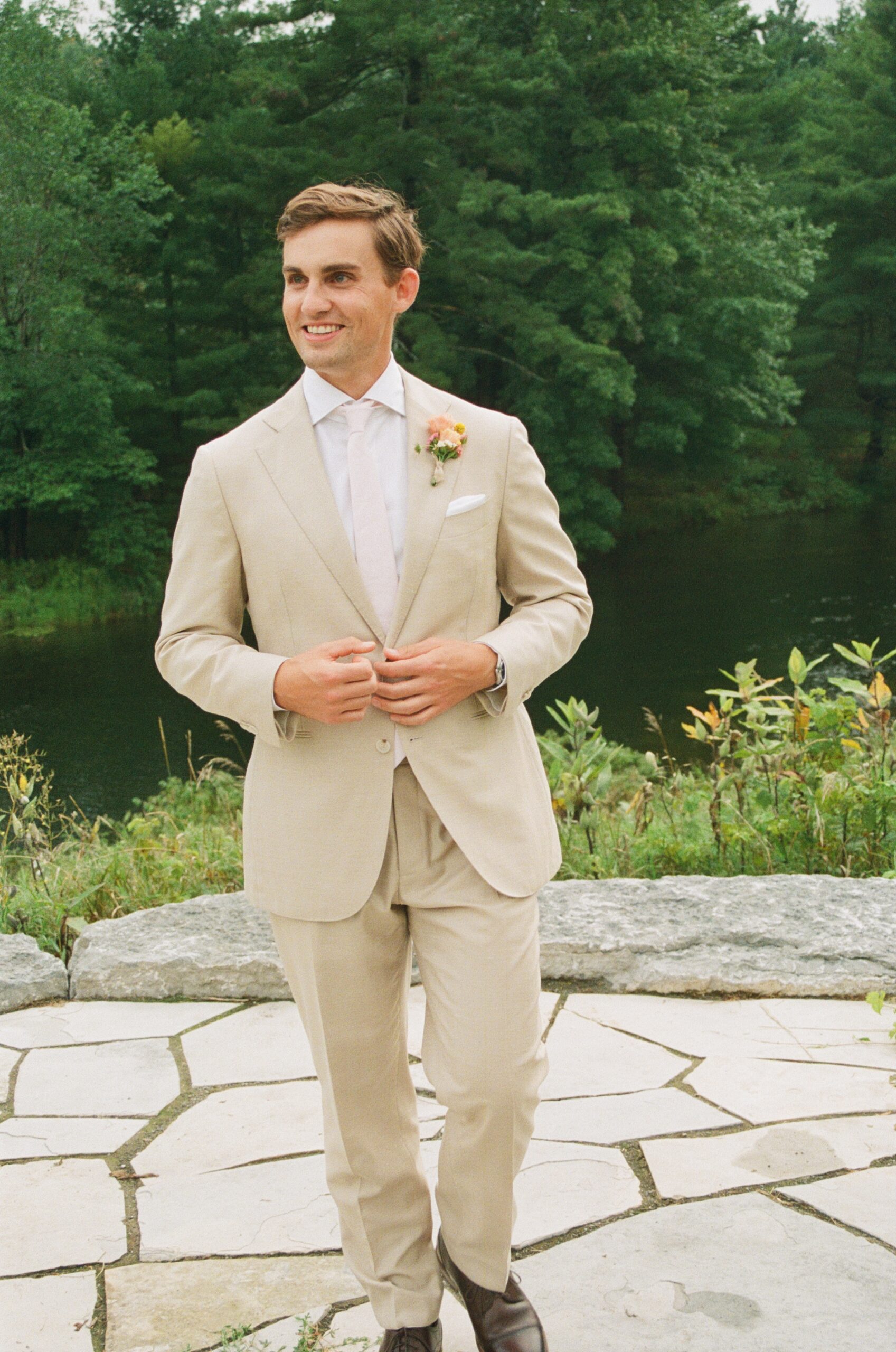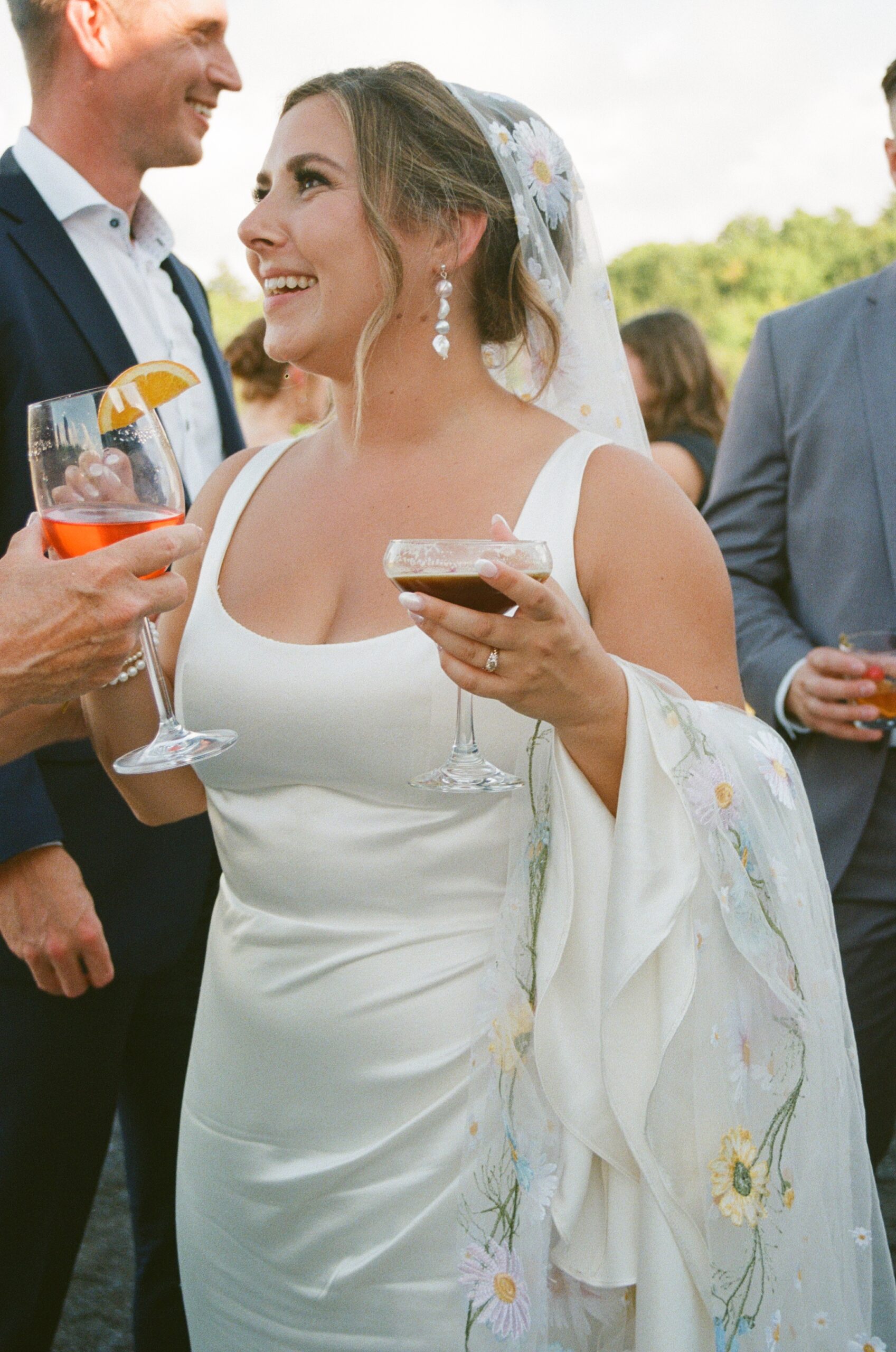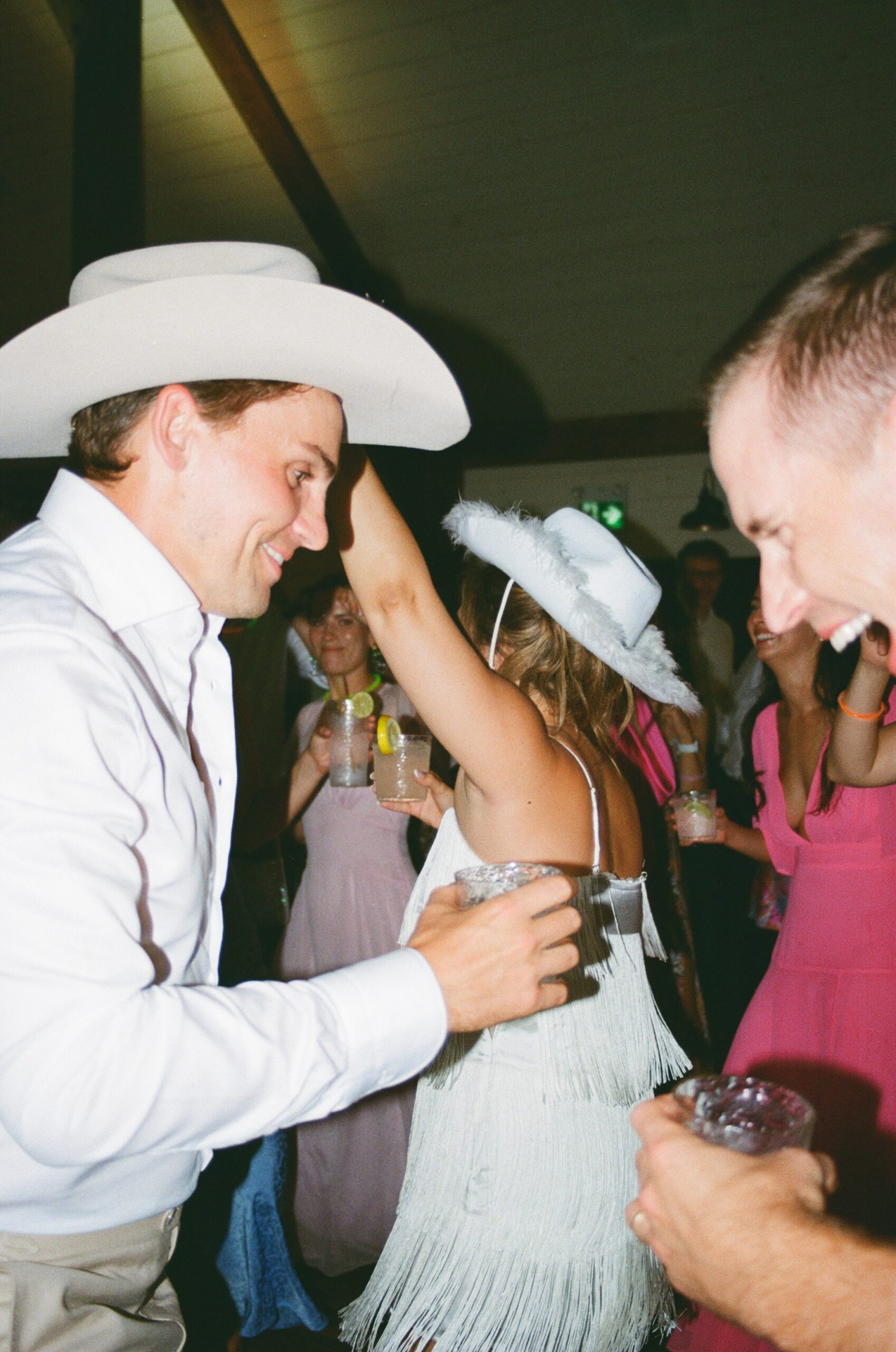Digital & Film Photography — Why I Shoot With Film
Film photography embraces the perfectly imperfect aspects of my client’s relationships. In this post, I’ll share what I love about film photography and how it contrasts with digital, showcasing the best of both worlds. I’ll also delve into the moments when I choose to use film, highlighting its special place in my creative process.

It’s perfectly, imperfect.
There’s nothing quite like the imperfection of film photography. It produces honest and authentic photos which is one of the main reasons I like it so much. It shows what’s truly there and in my opinion, that’s what wedding photography should be. Honest photographs that capture the beauty of your day. The laughs and tears and sweet glances, but also mixed with the anticipatory nerves and unexpected realities of the day. Having a mix of digital and film photography is the perfect combination for a day you’ll remember for the rest of your lives.
Film encourages me as a photographer to be extremely intentional with each frame by slowing down and being mindful of the shot I am taking. With digital you can take a burst of 100 images in mere seconds. While this is beneficial in certain circumstances, there are times that deliberately shooting one purposeful shot, rather than burst shooting, will produce an incredible image. This mentality of shooting has also bled into my digital work and improved the client’s final galleries.









What I love about Film Photography
Film can add more value and weight to each image. It takes more time and intentionality. You have to be patient with waiting for the moment and when it all comes together and you press the shutter, it is worth so much and is cherished that much more.
I love how film feels so genuine. The colours and textures show up in a unique way that is different from digital. People can try to replicate it, but it isn’t fully the same. It can never quite be mimicked. With film, it naturally captures the imperfection of emotions whereas with digital it is crisp and clean.
Sometimes the crystal clear image can be the best option, of course, but other times I find it can distract from the moment. When the image is perfectly clear, the emotion can be glossed over. The wedding day should be a mix of things smoothly going to plan, but also enjoying celebrating with your family and friends.









Digital & Film: The best of both worlds
Don’t get me wrong, having a digital camera is essential. They’re easy to use, fast, and you know what you’re getting right away. You have more opportunity to catch the moment because of their efficiency. You can also crop, enlarge images, and have more options transforming them in various ways, so you can fix mistakes or simply alter things to your liking in post-production. That’s not as much of an option when it comes to film because of the smaller sensor size and no ability to shoot in RAW and capture extra file information.
Starting to shoot film was no easy feat. I was gifted many film cameras over the years and I decided to give it a shot a few years ago because I loved the feel of film images. While practicing with those film cameras, I realized it almost felt like I was learning photography all over again. It had been so long since I’d learned to shoot with my digital cameras as a 12 year old.
When shooting film, you don’t have the crutch of using the LCD screen to meter the light and adjust the settings. Using a digital camera, it will focus precisely and effortlessly for the user, but using a 1960s camera – it’s on you to focus it manually. Ultimately, you need faith in your abilities and the settings you’ve chosen. When that’s done correctly, it can be incredibly rewarding. And when you don’t, it can be a learning experience for next time.
Now that I’m more comfortable with film photography, I incorporate it and have officially been offering it to clients since 2023. My preference is to include about five percent of film to the final image gallery and in my opinion, this is the perfect balance. It may not sound like much, but like I mentioned before, each film image holds so much more weight than a digital one, so you don’t need as many to have the same impact.






When Do I Use Film Photography?
During the wedding day, I lean more to using it during the ceremony, cocktail hour, and couples portraits. I chose those times because there’s more opportunities to grab diverse shots. Cocktail hour is another great time to transition into a mix of digital and film photography because of the authenticity of guest photos. They could be enjoying mingling, meeting up with relatives they haven’t seen, or appreciating the setting and, without question, the appetizers.
I also love close up shots of the couple with it! I’d actually prefer it on film because it adds a softness and texture to the image and in return the moment. It puts a filter-like essence on a photo, so the viewer is focusing on the emotion of that moment instead of their nose hairs.
Film photography requires intentionality when shooting and appreciation of the imperfections in life. If you’re curious what a mix of digital and film photography might look like in a wedding gallery, take a look at one of my favourites here.

